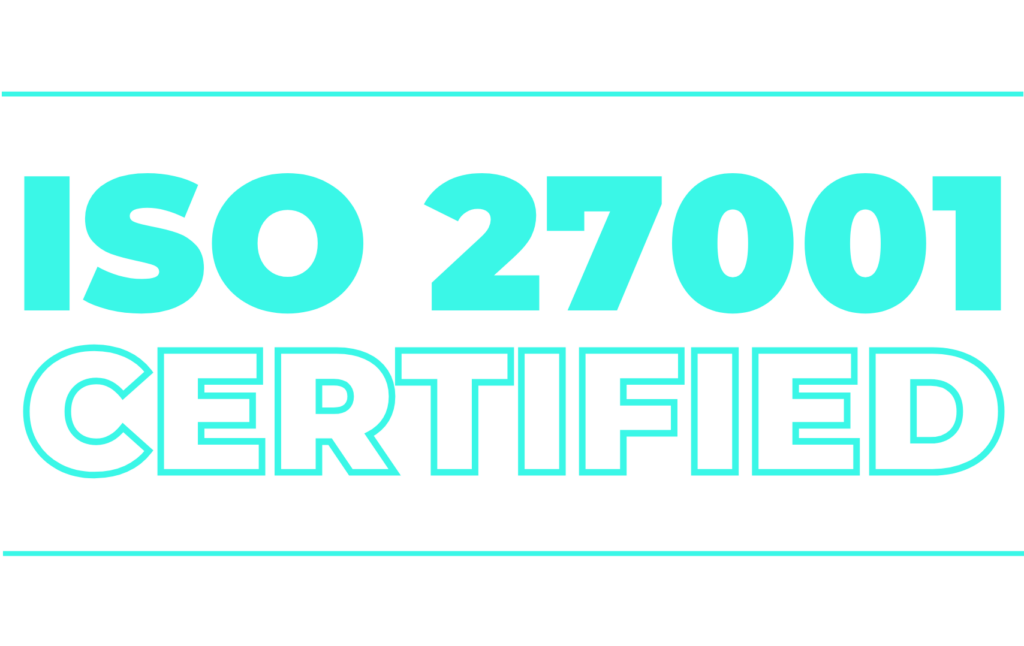CTOs play a vital role in the success of software companies. According to a recent survey, 92% of CTOs believe that technology is essential to their company’s growth strategy. Additionally, 77% of CTOs say that they are investing in digital transformation initiatives.
If you’re just embarking on your journey as a Chief Technology Officer (CTO), prepare yourself for a dynamic and multifaceted role. The responsibilities associated with CTO positions are diverse, and not all of them may be immediately evident from the job description.
As if that were not enough, CTO roles vary from company to company. You’ll need different technical and soft skills depending on the organisational structure, the nature of the business, and its customer base.
What Is a CTO?
A Chief Technology Officer, often referred to as a Chief Technical Officer, assumes the role of the highest-ranking technology executive within a company. In their capacity as the leader of the engineering or technology department, the CTO strategically harnesses technological innovations and formulates comprehensive policies and procedures to perpetually enhance the quality of the company’s products and services.
CTOs typically work closely with the Chief Information Officer (CIO), but some may also collaborate closely with the Chief Executive Officer (CEO).
Key Responsibilities and Essential Skills of a Chief Technology Officer (CTO)
Key Responsibilities of a CTO
- Develop and implement the company’s technology strategy
- Manage the company’s technology team
- Oversee the development and launch of new products and services
- Ensure that the company’s technology is aligned with its business goals
- Manage the company’s technology infrastructure
- Stay up-to-date on the latest trends and technologies
- Communicate effectively with both technical and non-technical stakeholders
CTOs must have a strong technical background, as well as excellent leadership and communication skills. They must also be able to think strategically and understand the business needs of their company.
Key Skills and Qualities of a Successful CTO
- Technical expertise in a variety of areas, such as software development, cloud computing, and data science
- Strong leadership and communication skills
- Strategic thinking ability
- Broad vision
- Business acumen
- Ability to work effectively with a variety of stakeholders
If you are considering a career as a CTO, it is important to develop a strong technical background and gain experience in leadership and management. You should also network with other CTOs and industry professionals to learn more about the role and the challenges and opportunities that it presents.
Steps to Attaining the CTO Position
Becoming a Chief Technology Officer (CTO) is a unique journey for each individual, but there are some common traits and steps that can help you succeed in this role.
Step 1: Learn About Technology
To increase your chances of becoming a CTO, it’s crucial to have a deep understanding of technology. Technology encompasses a wide range of fields, so it’s wise to focus on areas that are relevant to your industry. For instance, if you work in the automotive industry, it’s essential to be well-versed in technologies like Artificial Intelligence (AI) and the Internet of Things (IoT), as these play a fundamental role in the future of automobiles.
Step 2: Gain Experience in Technology Roles
Accumulating over 16 years of experience in various technology roles is a critical part of your journey to becoming a CTO. The more experience and knowledge you have in your industry, the better your chances of reaching a C-suite position. Positions such as software engineering, web development, or working with big data are typical roles that a CTO may have held before taking on their current position.
Step 3: Develop Strong Leadership Skills
Being a great leader is often a natural trait, but you can also enhance your leadership abilities through relevant courses and, most importantly, hands-on experience. Gaining experience in management and leadership roles will serve as stepping stones to achieving the CTO role in an organisation.
Step 4: Build a Strong Professional Network
Networking plays a crucial role in advancing your career in most industries today. Meeting new professionals and cultivating relationships with industry leaders can have a significant impact on your career progression. When you combine your education and experience with a strong professional network, you’ll be well on your way to achieving the CTO position you aspire to.
Becoming a CTO involves a combination of in-depth technological knowledge, years of experience, leadership development, and effective networking. These steps can help you navigate your path to success in this role.
4 Vital CTO Roles and Responsibilities
Every software company is unique, but your role as a Chief Technology Officer (CTO) may encompass one or more of the following responsibilities. Depending on your management approach, background, and strengths, you may either naturally evolve into these roles or utilise the company’s resources to fulfil them.
1. The Visionary
-
Role Overview
This particular Chief Technology Officer (CTO) possesses the foresight to conceptualise how technological solutions can propel the achievement of short- and long-term corporate objectives.
-
Strategic Collaboration
In collaboration with fellow C-level executives, they formulate the company’s technical strategy and business model.
-
Market Exploration
In pursuit of these goals, these astute CTOs diligently scrutinise the market landscape, pinpoint avenues for expansion through cutting-edge technologies, and harmonise the functioning of technology teams.
-
Relevance
This role is notably prevalent in technology startups and enterprises where software holds a pivotal position.
-
Key Attributes
The attributes of strategic thinking, an extensive grasp of the industry, an acute awareness of the latest technological trends, and a background in research and development (R&D) are indispensable.
-
Roadmap Crafting
A visionary CTO meticulously sketches the current requisites and challenges, envisages the future landscape, and crafts a comprehensive, incremental roadmap for growth to achieve a wide variety of organisational objectives, including:
- Product development
- Operational processes
- Team coordination
- User experience
- Cybersecurity
- Budgeting
- Tech stack
2. The Technical Lead
-
Role Overview
Like a visionary CTO, a technical lead is responsible for developing the technical vision of a company. However, unlike a visionary CTO, this Chief Technology Officer type is also heavily involved in the vision’s execution.
-
Hybrid Role
Think of it as a hybrid of corporate strategists, human resources experts, team managers, and highly qualified developers.
-
Hands-On Involvement
This is a much more hands-on role. Technical lead CTOs oversee software development and ensure that the tech team has everything it needs to deliver.
-
Team Management
Often, the CTO will take part in selecting, hiring, onboarding, training, managing, and mentoring engineers.
-
Development Responsibility
In pre-seed companies and startups, it’s not uncommon for the chief technology officer to personally build and implement the digital product architecture. They may also be responsible for data security, deployment issues, and QA management.
3. The Infrastructure Lead
An infrastructure lead-type CTO would probably have been with the company since the beginning. They are responsible for defining the system and its components, overseeing data, security, maintenance, networks, and more. In many cases, these CTOs share duties with the company’s chief information officer. This can blur the lines between the two somewhat, but the positions remain distinct.
4. The Customer Specialist
These Chief Technology Officers act as a bridge or liaison between businesses and consumers. This role is common in organisations that are customer-centric or offer customizable software solutions.
-
Responsibilities of a Customer Specialist CTO
The CTO is responsible for customer relations, researching and understanding the target market, and helping build and deliver the products it needs. This process entails creating a technical vision that:
- Meets customer requirements
- Helps improve user experience and boost customer satisfaction
- It’s flexible and can keep pace with consumer demand as it evolves
- Allows for scalability to ensure future growth
What Is the Difference Between CIO and CTO Roles?
In the past, a Chief Information Officer would perform both CIO and CTO roles. As technologies advanced, a growing need to split the job into two positions emerged.
1. CIO Duties
CIO duties focus on internal operations and business procedures, including the implementation, management, and usability of technologies. Their primary responsibility is analysing how different technological solutions could improve existing processes and integrating them to realise those benefits.
2. CTO Duties
In contrast, a CTO is a more outward-looking role with a focus on corporate strategy and implementing customer-facing services and products.
Managing Software Teams to Success: Tips for New and Experienced CTOs
Whether you’re new to being a CTO or you’ve been doing it for a while, it can be tough to keep your tech team happy, motivated, and working well. Companies often ask their developers to work really hard and fast to stay ahead of the competition, especially in uncertain times.
But this can make your team tired and less happy. The good news is there are some things you can do to make your developers happier and more successful, which will also help your business. Here are a few examples:
- Lead by Example: As a CTO, your team looks up to you for guidance. Demonstrate a strong work ethic, commitment to quality, and a passion for technology. Your actions should reflect the values and work ethic you expect from your team.
- Effective Communication: Clear and open communication is key. Ensure that your team understands the goals, priorities, and expectations. Foster an environment where team members can freely express their ideas and concerns.
- Inclusive decision-making: Ensuring that developers have a say in the product roadmap is essential to boosting team morale. Be sure to include design discussions and whiteboarding in the decision-making process and actively seek the input of engineering teams.
- Task delegation: Your role as a CTO is to empower, coach, and support developers, not oversee and direct their every step. Delegating as many responsibilities as possible (without compromising quality or performance) can help motivate and engage tech teams.
- Hire and Develop Talent: Attract and retain top talent. Invest in ongoing training and development to help your team members grow in their roles. Encourage a culture of continuous learning.
- Delegate and Empower: Trust your team to make decisions within their areas of expertise. Micromanagement can stifle creativity and productivity. Empower your team to take ownership of their work.
- Manage Resources Wisely: Allocate resources effectively, whether it’s budget, time, or manpower. Make data-driven decisions to ensure you’re maximising the use of resources.
- Adapt to Change: The tech industry is constantly evolving. Stay up to date with the latest trends and technologies. Be flexible and ready to adapt your team’s approach as needed.
- Implement agile practices: Collaboration, trust, team agreement, and a blame-free mindset are staples of the modern agile culture.
For more tips and best CTO practices, check out our blog post, How to Manage a Software Development Team.
Navigating CTO Roles and Responsibilities: Let Zartis Be Your Guide
As a leader, it’s important to trust your instincts, but it’s equally important to recognize when you could benefit from expert guidance.
At Zartis, we excel in managing over 50 software development teams across a diverse range of industries. Our extensive experience has given us unique insights into the complex world of CTO roles and responsibilities.
Whether you’re setting up a tech team from scratch or looking to enhance the performance of your existing teams, we’re here to help.
Our Services Include:
- Team Setup and Management: From assembling the right talent to optimising team dynamics, we’ll guide you through it all.
- Strategic Planning: We’ll help you craft a roadmap to align your tech efforts with your business goals.
- Technology Stack Selection: Make informed decisions about the tools and technologies that will drive your success.
- Performance Optimization: Boost efficiency and productivity to achieve outstanding results.
Don’t go it alone! Reach out to Zartis today, and let’s work together to achieve your tech leadership goals! Your journey to effective CTO leadership starts here.


